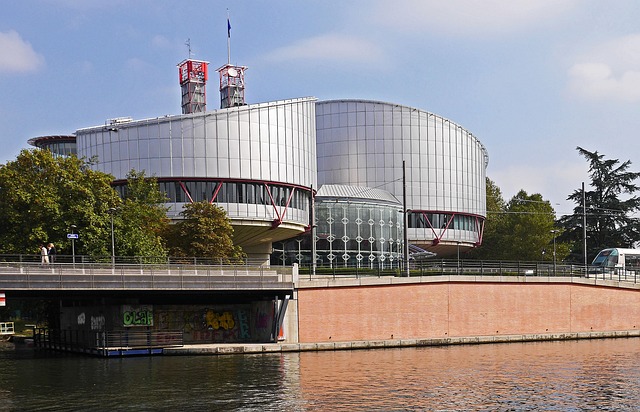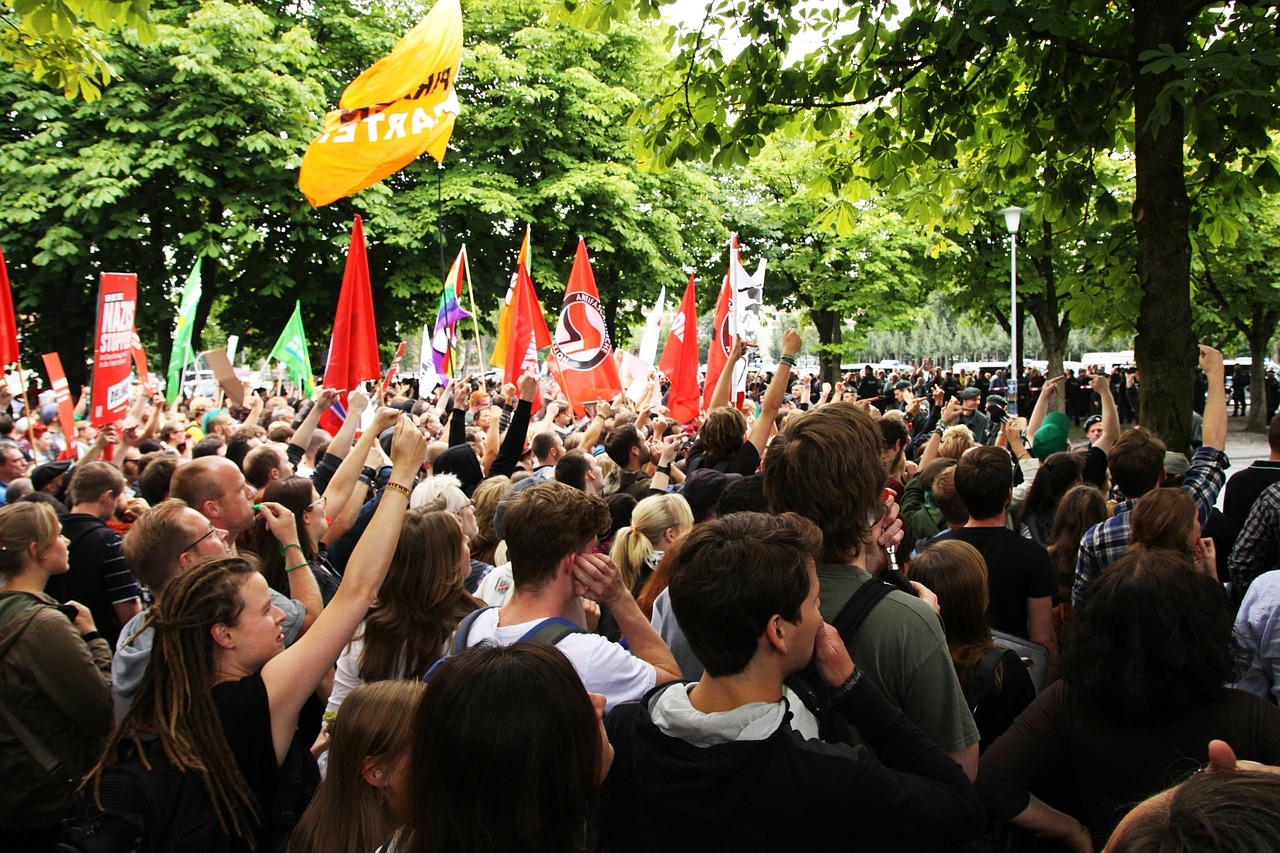3
0
3750
Фабула судового акта: Заявник від імені молодіжної громадської організації «Чумацький Шлях», зареєстрованої у місті Вінниці, повідомив компетентні органи про проведення пікету у зв`язку із «нездоровим соціальним та економічним станом справ у регіоні».
Під час пікету, який відбувався у сквері навпроти адміністративного приміщення, виконавчий орган міської ради ініціював звернення до суду щодо заборони пікету з мотивів протизаконності розміщення «малих архітектурних форм», порушення громадського спокою та публічного порядку, ускладнення трафіку та ін.
Уже після початку пікету районний суд, розглянувши позов міської ради, дійшов висновку про невідповідну поведінку учасників пікету та заборонив пікет в порядку статті 182 Кодексу адміністративного судочинства України. Суд відзначив, що пікет перешкоджає користувачам дороги, і з огляду на невизначені кількісний склад учасників пікету та його тривалість, породжує можливість повторного порушення публічного порядку. Також суд заборонив даній громадській організації та іншим особам організовувати і проводити мирні зібрання на вулицях і скверах м. Вінниці у майбутньому. Пікет було розігнано представниками поліції в порядку негайного виконання судового рішення.Заявник звернувся до суду апеляційної інстанції із скаргою на рішення суду першої інстанції. Суд апеляційної інстанції встановив, що розміщення наметів порушує норми чинного законодавства. Із зазначених мотивів Заявнику було відмовлено в задоволенні апеляційної скарги. Водночас, суд наголосив, що заборонити мирні зібрання неможливо з огляду на положення Конституції України; проте, з огляду на те, що Конституцією «пікетування» адміністративних будівель не закріплено як одна з форм мирних зібрань, поняття «мирні зібрання» у резолютивній частині рішення суду першої інстанції слід замінити на «пікети». Суд касаційної інстанції відхилив подану Заявником скаргу.
ЄСПЛ наголосив, що право на свободу зібрань є засадничим правом у демократичному суспільстві і, як і право на вираження поглядів, є одним фундаментів такого суспільства. Це право охоплює як приватні зібрання, так і зібрання у публічних місцях, може виявлялися як у статично, так і у формі процесії; дане право може здійснюватися індивідуальними учасниками або особами, що організовують збори
ЄСПЛ підкреслив, що закон має бути достатньо чітким, щоб дати людям адекватне розуміння обставин, за умови настання яких державні органи мають право втручатися у права, гарантовані Конвенцією.
Проаналізувавши матеріали справи та застосовні норми національного законодавства, ЄСПЛ висловив сумнів, що з огляду на формулювання статті 182 Кодексу адміністративного судочинства України про заборону майбутніх зібрань, Заявник міг передбачити заборону зібрання, що вже триває, відповідно до вказаної норми. Водночас, ЄСПЛ наголосив, що хоча формулювання вказаної статті не було спеціально розроблено для вирішення питання щодо розпуску зібрань, що вже почалися, накладення обмеження на зібрання, чиї учасники порушують матеріальне право, не є цілком непередбачуваним. У зв`язку із цим особливого значення набуває інструментарій, яким забезпечена судова влада, для вирішення питань, пов`язаних із втручанням у основні права, відповідно до принципів верховенства права навіть за відсутності законодавства, що конкретно регулює певну ситуацію.
ЄСПЛ вказав, що твердження щодо неналежної поведінки пікетувальників не були належним чином перевірені національними судами. Зокрема, суди не доклали жодних зусиль, спрямованих на перевірку таких обставин, наприклад, опитуючи свідків чи використовуючи інші процесуальні заходи. Також апеляційний суд, постановивши замінити словосполучення «мирні зібрання» на слово «пікет» у резолютивній частині рішення суду першої інстанції, не пояснив значення даного терміну та його співвідношення з терміном «мирне зібрання». Оскільки встановити значення терміну «пікет» на підставі національного законодавства та наданих сторонами матеріалів не видавалося можливим, ЄСПЛ дійшов висновку що фактичний обсяг заборони проведення «пікетів» у майбутньому може бути відкритим для різних тлумачень і не має необхідної точності для визначення Заявником своєї поведінки у майбутньому.
ЄСПЛ відзначив, що національні суди не обґрунтували, в чому саме виявлялося «порушення публічного порядку» та інші порушення з боку пікетувальників; не оцінили їхню кількість, або розмір заблокованої території. З огляду на вказане, ЄСПЛ зробив висновок про невідповідність здійсненого у права Заявника втручання жодній «нагальній соціальній потребі».
ЄСПЛ, врахувавши мету пікету, суттєвий характер обмежень, застосованих до його учасників, дійшов висновку, що здійснене втручання не відповідало нагальній суспільній потребі, не забезпечило «справедливий баланс» між конкуруючими інтересами – таким чином, було порушено статтю 11 Конвенції.
Аналізуйте судовий акт:
«Бачковський та інші проти Польщі» (Bączkowski and Others v. Poland), заява № 1543/06
«Патий та інші проти Угорщини» (Patyi and Others v. Hungary) заява № 5529/05
«Кудревічіус та інші проти Литви» [ВП] (Kudrevičius and Others v. Lithuania [GC]), заява № 37553/05
«Лашманкін та інші проти Росії» (Lashmankin and Others v. Russia), заява № 57818/09
«Вєренцов проти України» (Vyerentsov v. Ukraine), заява № 20372/11
«Шмушкович проти України» (Shmushkovych v. Ukraine), заява 3276/10
«Гафгазе Маммадов проти Азербайджану» (Gafgaze Mammadov v. Azerbaijan), заява № 60259/11
«Какабадзе та інші проти Грузії» (Kakabadze and Others v. Georgia), заява 1484/07
«Прімов та інші проти Росії» (Primov and Others v. Russia), заява № 17391/06
«Букта та інші проти Угорщини» (Bukta and Others v. Hungary), заява № 25691/04
«Даніленков та інші проти Росії» (Danilenkov and Others v. Russia), заява № 67336/01
Із перекладом тексту рішення на українську мову можна ознайомитися на офіційному веб-сайті Міністерства юстиції України за посиланням: https://minjust.gov.ua/files/general/2019/02/08/20190208164747-86.docx

FOURTH SECTION
CASE OF CHUMAK v. UKRAINE
(Application no. 44529/09)
JUDGMENT
STRASBOURG
6 March 2018
FINAL
06/06/2018
This judgment has become final under Article 44 § 2 of the Convention. It may be subject to editorial revision
In the case of Chumak v. Ukraine,
The European Court of Human Rights (Fourth Section), sitting as a Chamber composed of:
Vincent A. De Gaetano, President,
Ganna Yudkivska,
Paulo Pinto de Albuquerque,
Iulia Motoc,
Georges Ravarani,
Marko Bošnjak,
Péter Paczolay, judges,
and Marialena Tsirli, Section Registrar,
Having deliberated in private on 13 February 2018,
Delivers the following judgment, which was adopted on that date:
PROCEDURE
1. The case originated in an application (no. 44529/09) against Ukraine lodged with the Court under Article 34 of the Convention for the Protection of Human Rights and Fundamental Freedoms (“the Convention”) by a Ukrainian national, Mr Sergiy Viktorovych Chumak (“the applicant”), on 30 July 2009.
2. The applicant was represented by Mr V. Ivashchenko, a lawyer practising in Vinnytsya. The Ukrainian Government (“the Government”) were represented by their Agents, most recently, Mr I. Lischyna.
3. The applicant alleged, in particular, that a court decision ordering dispersal of a “picket” (пікет) he had organised and prohibiting further pickets being held by the Association of which he was the chairman had been unlawful and unfair and that no effective remedies had been available for this complaint.
4. On 29 October 2015 the applicant’s complaints under Articles 11 and 13 of the Convention were communicated to the Government and the remainder of the application was declared inadmissible pursuant to Rule 54 § 3 of the Rules of Court.
THE FACTS
I. THE CIRCUMSTANCES OF THE CASE
5. The applicant was born in 1968 and lives in Stryzhavka.
6. On 12 September 2006 the applicant submitted a written notice to the mayor of Vinnytsia informing him that the Chumatskyy Shlyakh civic youth association (“the Association”) registered in Vinnytsia, of which he was chairman, intended to hold a picket (пікет) outside the Vinnytsia Regional Authority (“the regional authority”) building. The notice read as follows:
“We inform you that, starting from 14 September 2006 our organisation will hold a picket [in front] of the [regional authority] for an indefinite term in view of the unhealthy, in our view, social and economic state of affairs in the region.
Beginning of the picket: 14 September 2005 at 14:00.
Place: square in front of the [regional authority] building;
Responsible person according to the decision of the Association’s management: Chumak S.V. [the applicant].
Chairman of the [Association] Chumak, Sergiy Viktorovych.”
7. According to the Government, the Association’s officially registered chairman at the material time was a certain Igor Viktorovyh Chumak. The applicant was neither the chairman, nor could he even be a member of the Association because according to the Association’s charter, membership was open to persons under the age of twenty-eight. At the time of the relevant events the applicant was older.
8. On 13 September 2006 the mayor’s office forwarded the applicant’s notice to the police, requesting that they maintain public order during the demonstration.
9. On 14 September 2006 the Association started the picket as intended. According to the applicant, several other local groups joined the action and two small camping tents (measuring 2 by 2 metres) were erected by the walls of the regional authority building on a 15-metre wide street for storing handout materials and displaying the protesters’ slogans.
10. On 15 September 2006 the executive committee of Vinnytsia City Council instituted administrative proceedings seeking “to enjoin the [Association] not to organise and carry out pickets on the streets and squares of Vinnytsia and to oblige it to uninstall the unlawfully erected ‘small architectural structures’ (малі архітектурні форми).” The plaintiff alleged that the protesters had been breaching the peace and public order by offending passers-by, acting arrogantly towards them, obstructing the traffic and pedestrians and endangering the lives and health of local residents. Referring to Article 182 of the Code of Administrative Justice (“the CAJ”, see paragraph 20 below), which provided for the lodging of an action before the start of a picket, the plaintiff asked the court to admit its action for consideration out-of-time on the grounds that only after the picket had started had it become apparent that the protesters intended to engage in inappropriate conduct. The statement of claim was supplemented with applications by V.Ch. and Y.S., two passers-by, addressed to the police, in which they complained that the protesters had “acted arrogantly”, had offended their feelings and had erected tents obstructing pedestrians and spoiling the street aesthetics.
11. On the same date the Leninskiy District Court in Vinnytsia (“the District Court”) held a hearing at which the applicant, representing the Association, denied the allegations that the picketers had engaged in any inappropriate conduct. According to him, during the hearing he had unsuccessfully made several requests for the production of evidence. Notably, he had requested that V.Ch., Y.S. and the police officers present at the site of the picket be summoned for questioning; that the police authorities be asked whether any incidents of unlawful conduct by the picketers had been documented; and that the site be inspected in order to determine whether, in fact, the camping tents mounted by the picketers had obstructed the traffic or the passage of pedestrians.
12. Later on the same date, the District Court allowed the claim, having decided that the case file contained sufficient evidence that the protesters had behaved inappropriately. The relevant part of the judgment read as follows:
“... [the] executive committee ... did not and could not have known about a possible breach of public order by the participants of the event, which fact resulted in missing the time-limit for lodging a court action as required by paragraph 1 of Article 182 of the Code of Administrative Justice of Ukraine; the court therefore resets the procedural time-limit ...
The court, when deciding the case, takes into account that the participants in the event installed small architectural edifices on the pavement. In addition, during the event, they acted arrogantly, thus offending other citizens, obstructed the passage of pedestrians along Soborna street, and endangered road users, a fact confirmed by the complaints from Y.S. and V.Ch.
In addition, the court has regard to the fact that in the notice of the event it is stated that it will be held indefinitely. Also the number of protesters is not defined ... and it may gradually increase. Accordingly, at any time during the picket of indeterminate length, it cannot be excluded that those taking part might repeatedly breach public order.”
13. The court also noted that the picket “may potentially encroach upon the rights and freedoms of other local residents” and held as follows:
“[the court holds] to prohibit [the Association] and other persons taking part in the action from organising and carrying out peaceful assemblies in the streets and squares of Vinnytsia, [and] from installing small architectural edifices in Vinnytsia; ... oblige them to dismantle the small architectural edifices installed in the square in front of the [Administration’s] building ...
To allow immediate enforcement of the court ruling ...”
14. At 9 p.m. on 15 September 2006 the protesters were dispersed by the police.
15. On 29 September 2006 the local registry office informed the applicant that V.Ch. and Y.S. were not registered as residents at the addresses indicated by them in their complaints lodged with the police.
16. On 8 October 2006 the applicant lodged an appeal against the court judgment of 15 September 2006, which he signed as the Association’s chairman. He submitted that under Article 182 of the CAJ, a plaintiff’s action could not be examined when it had been lodged out of time. He further submitted that the court’s factual conclusions had been devoid of an evidentiary basis. In particular, there was no evidence whatsoever that the protesters had breached the law, apart from the complaints by V.Ch. and Y.S., who had given false home addresses and thus could not be identified. The applicant further complained that the court had rejected his request that those individuals be located and summoned, and that the police officers present at the site of the picket also be summoned for questioning concerning the alleged breaches of the law by the protesters. He also regretted that the court had refused his requests that the relevant police reports documenting the purported breaches of the law (if any) be produced and an inspection of the picket site be carried out with a view to determining whether the tents erected by the activists could count as “architectural structures” and whether there had been any obstruction of traffic or pedestrians. Lastly, the applicant complained that the sanction imposed by the District Court (a total and permanent ban on the Association organising peaceful assemblies in Vinnytsia) had been arbitrary and disproportionate.
17. On 22 November 2006 the Vinnytsia Regional Court of Appeal examined the applicant’s appeal and decided that, in view of the circumstances of the case (namely, the short notice of the intention to hold a picket and the indefinite period during which the participants planned to continue their demonstration) the administrative action lodged by the executive committee could be accepted for examination. It agreed with the District Court’s findings of fact and noted, in particular, that by installing the tents, the protesters had breached section 16 of the Populated Localities Development Act and section 18 of the Automobile Roads Act. At the same time, the Court of Appeal found that the sanction imposed on the protesters had been disproportionate. In particular, the Constitution of Ukraine generally allowed peaceful assemblies, which could therefore not be prohibited in a blanket manner. Nevertheless, it did not envisage a form of assembly such as the “picketing” of administrative buildings “with the installation on the streets of small architectural structures”. Accordingly, the court found that the term “peaceful assemblies” in the operative part of the District Court’s judgment had to be substituted with the term “pickets”. The court then rejected the applicant’s remaining arguments as unsubstantiated.
18. On 1 April 2009 the Higher Administrative Court of Ukraine dismissed an appeal on points of law lodged by the applicant.
A. Constitution of Ukraine of 1996
19. Article 39 of the Constitution of Ukraine reads as follows:
“Citizens have the right to assemble peacefully without arms and to hold meetings, rallies, processions and demonstrations, upon notifying in advance the bodies of executive power or bodies of local self-government.
Restrictions on the exercise of this right may be established by a court in accordance with the law and only in the interests of national security and public order, with the purpose of preventing disturbances or crimes, protecting the health of the population, or protecting the rights and freedoms of other persons.”
B. Code of Administrative Justice of 6 July 2005
20. The relevant provisions of the Code, as worded at the material time, read as follows:
Article 8. Rule of Law
“1. When considering a case, a court shall be governed by the principle of the rule of law, which provides, in particular, that a human being and his or her rights and freedoms shall be the highest social value and shall determine the essence and orientation of the activity of the State.
2. A court shall apply the principle of the rule of law by taking into account the case-law of the European Court of Human Rights.
3. The right to appeal to an administrative court for the protection of human rights and freedoms based directly on a reference to the Constitution of Ukraine shall be possible.
4. A court may not refuse to examine and resolve an administrative case on the grounds that the legislation applicable to the dispute is incomplete, unclear, incoherent, or lacking.”
Article 11. Adversarial nature of the proceedings, discretionary powers of the parties and official establishment of all circumstances of the case
“1. The consideration and resolution of cases in the administrative courts shall take place on the basis of adversarial proceedings, the evidence submitted by the parties and their ability to prove its cogency before the court.
2. The court shall consider administrative cases exclusively following the lodging of an action in accordance with the present Code and may not exceed the scope of the complaints. The court may exceed the scope of the complaints only in the event that this is necessary for the comprehensive protection of the rights, freedoms and interests of the parties or third persons whose protection is sought by them.
3. Each person who seeks judicial protection may dispose of his/her claim at his/her discretion, except in the circumstances determined in this Code ...
4. The court shall use the measures provided for in law which are necessary for the establishment of all the circumstances of the case, including by determining and ordering the production of evidence on its own initiative.
5. The court shall, on its own initiative, invite the parties to the proceedings to submit evidence or order the production of evidence which, in its view, is lacking.”
Article 182. Features of the proceedings relating to the administrative claims lodged by the authorities with a view to restricting the exercise of the right to freedom of peaceful assembly
“1. Immediately upon receipt of a notification concerning the organisation of meetings, rallies, processions, demonstrations, etc., the executive authorities [and] bodies of local self-government shall have the right to apply to the District Administrative Court of the respective locality with an action seeking to prohibit these events or otherwise restrict the right to freedom of peaceful assembly (concerning the place or time of their organisation, etc.).
2. An action received on the date on which the aforementioned ... events take place or thereafter shall be left without examination.
...
5. The court shall allow the plaintiff’s claims in the interests of national security and public order, where it establishes that carrying out the meetings, rallies, processions, demonstrations or other assemblies may create an imminent risk of disturbances or crimes, or endanger the health of the population or the rights and freedoms of other people. In its ruling, the court shall indicate the manner in which the exercise of the right to peaceful assembly is to be restricted.
6. The ruling of the court in respect of cases concerning restriction of the exercise of the right to peaceful assembly shall be enforced immediately. ...”
C. Other relevant provisions of domestic law and relevant case-law
21. Section 16(5) of the Populated Localities Development Act of Ukraine (Закон України “Про благоустрій населених пунктів”), Law no. 2807-IV of 6 September 2005, proscribed the installation in public areas of “objects for external advertisement, commercial stalls, pavilions, kiosks, and so on without authorisation.”
22. Section 18 of the Automobile Roads Act of Ukraine (Закон України «Про автомобільні дороги»), Law no. 2862-IV of 8 September 2005 proscribed the “placement of any objects, constructions, erections or their parts” within the boundaries of the so-called“red lines of the street”, delimiting the width of the street.
THE LAW
I. ALLEGED VIOLATION OF ARTICLE 11 OF THE CONVENTION
23. The applicant complained that the judicial authorities had imposed an arbitrary and disproportionate restriction on his right to freedom of assembly, as guaranteed in Article 11 of the Convention, which, insofar as relevant, reads:
“1. Everyone has the right to freedom of peaceful assembly ... .
2. No restrictions shall be placed on the exercise of [this right] other than such as are prescribed by law and are necessary in a democratic society in the interests of national security or public safety, for the prevention of disorder or crime, for the protection of health or morals or for the protection of the rights and freedoms of others. ...”
A. Admissibility
1. Submissions by the parties
24. The Government argued, firstly, that the present complaint was incompatible ratione personae with the provisions of the Convention, as the applicant was not a victim of the violation complained of. First of all, he was not a party to the domestic proceedings, which had been instituted against a legal entity, namely, the Chumatskiy Shlyakh Association. Although he acted as that entity’s representative in the course of the proceedings, he was not a party to those proceedings himself. The disputed court decisions did not impose any sanctions on the applicant personally and did not affect his civil rights. In addition, the Government insisted that the applicant was neither the chairman, nor a member of the Association affected by the court decisions complained of (see paragraph 7 above).
25. Secondly, the Government argued that the application was in any event manifestly ill-founded. Notably, the decisions complained of had been taken by the domestic courts at the close of the contentious proceedings in full compliance with the requirements of a fair trial as provided for under Article 6 of the Convention. The national courts had established the relevant facts thoroughly and comprehensively and had found that the picket had constituted a threat to the life and health of local residents. The restriction imposed on the protesters’ right was not disproportionate, as they had not been precluded from holding other forms of assembly that did not constitute such a threat.
26. The applicant generally disagreed. He insisted that there had been a breach of his freedom of peaceful assembly guaranteed under Article 11 of the Convention and referred to the arguments on the merits raised in his initial application.
2. The Court’s assessment
(a) As regards the applicant’s victim status
27. The Court notes that, as observed by the Government, the applicant himself was not a party to the court proceedings leading to the measures of interference complained of in the present case. However, this matter, which could have been relevant for deciding on his victim status for the purposes of Article 6, does not deprive him of victim status in respect of a complaint lodged under Article 11 of the Convention. The Court has already held that organisers of assemblies may claim to be directly concerned by any relevant negative decision of the authorities (see Bączkowski and Others v. Poland, no. 1543/06, §§ 67 and 73, 3 May 2007 and Patyi and Others v. Hungary, no. 5529/05, §§ 25 and 27, 7 October 2008). The applicant in the present case was the organiser and a participant of the protest. He had also signed personally all the relevant documents submitted to the competent authorities and represented the Association during the court proceedings. The appeals signed by him as chairman of the Association were admitted for consideration. In the light of the foregoing, the Court considers that for the purposes of the Convention proceedings, the applicant has standing to bring the present complaint.
28. His victim status for the purposes of Article 34 of the Convention is therefore not open to doubt.
29. The Court therefore dismisses the Government’s objection.
(b) Otherwise as to admissibility
30. The Court considers that the present complaint is not manifestly ill‑founded within the meaning of Article 35 § 3(a) of the Convention. It further notes that it is not inadmissible on any other grounds. It must therefore be declared admissible.
B. Merits
1. Submissions by the parties
31. The applicant alleged that the court judgments dispersing the picket of which he was the organiser and prohibiting further pickets by the Association of which he was chairman constituted unlawful interference with his right to freedom of peaceful assembly, which was also not necessary in a democratic society.
32. In particular, the courts had applied a procedure provided for by Article 182 of the CAJ for preventing demonstrations which had not yet begun. Under paragraph 2 of that provision, the time-limit within which the competent authorities were allowed to lodge a court action expired on the date on which the demonstration at issue was scheduled. No provision was made for extending that time-limit in order to allow the examination of an action lodged after the demonstration had begun.
33. The applicant also argued that the judicial authorities had reached manifestly arbitrary factual conclusions in respect of the protesters’ conduct and had groundlessly rejected all his arguments and his pertinent procedural requests. Notably, the courts had refused to order an independent inspection of the picketing site; to summon the police officers present during the picket; or to identify and question the two passers-by who had purportedly complained to the police of the protesters’ misconduct. According to the applicant, the fact that the wrong home addresses had been given in the statements of complaint lodged by those individuals, making them unidentifiable, raised serious doubts as to the genuine nature of the relevant complaints.
34. Lastly, the applicant complained of the radical and blanket nature of the restrictions imposed by the domestic authorities on his ability to organise and take part in the pickets on behalf of the Association of which he was chairman.
35. The Government did not comment on the merits of the present complaint.
2. The Court’s assessment
(a) Whether there has been an interference
36. The Court reiterates that the right to freedom of assembly enshrined in Article 11 of the Convention is a fundamental right in a democratic society and, like the right to freedom of expression, one of the foundations of such a society. Thus, it should not be interpreted restrictively. As such this right covers both private meetings and meetings in public places, whether static or in the form of a procession; in addition, it can be exercised by individual participants and by the persons organising the gathering (see in this context Kudrevičius and Others v. Lithuania [GC], no. 37553/05, § 91, ECHR 2015, with further references).
37. In the present case, a peaceful manifestation organised by the applicant as a leader of the Chumatskiy Shlyakh Association was dispersed pursuant to a court order and the Association itself was enjoined to refrain from organising any further “pickets” in the city for an indefinite period of time. Those measures represent a clear case of interference with freedom of assembly guaranteed by Article 11. It remains to be seen whether the interference was justified under paragraph 2 of Article 11 of the Convention.
(b) Justification of interference
(i) General principles
38. The Court reiterates that an interference will constitute a breach of Article 11 unless it is “prescribed by law”, pursues one or more legitimate aims under paragraph 2 and is “necessary in a democratic society” for the achievement of those aims (see, among other authorities, Kudrevičius and Others, cited above, § 102).
39. The expressions “prescribed by law” and “in accordance with the law” in Articles 8 to 11 of the Convention not only require that the impugned measure should have some basis in domestic law, but also refer to the quality of the law in question. The law should be accessible to those concerned and formulated with sufficient precision to enable them – if need be, with appropriate advice – to foresee, to a degree that is reasonable in the circumstances, the consequences which a given action may entail. Also, the law must be sufficiently clear in its terms to give individuals an adequate indication as to the circumstances in which and the conditions on which public authorities are entitled to interfere with the rights guaranteed by the Convention (see, among other authorities, Lashmankin and Others v. Russia, nos. 57818/09 and 14 Others, §§ 410-411, 7 February 2017).
40. When the Court carries out its scrutiny, its task is not to substitute its own view for that of the relevant national authorities but rather to review under Article 11 the decisions they took. This does not mean that it has to confine itself to ascertaining whether the State exercised its discretion reasonably, carefully and in good faith; it must look at the interference complained of in the light of the case as a whole and determine, after having established that it pursued a “legitimate aim”, whether it answered a “pressing social need” and, in particular, whether it was proportionate to that aim and whether the reasons adduced by the national authorities to justify it were “relevant and sufficient”. In so doing, the Court has to satisfy itself that the national authorities applied standards which were in conformity with the principles embodied in Article 11 and, moreover, that they based their decisions on an acceptable assessment of the relevant facts (see, among other authorities, Kudrevičius and Others, cited above, § 143, with further references).
(ii) Application to the present case
41. In the present case the manifestation organised by the applicant was dispersed based on a judicial order issued under the procedure provided for in Article 182 of the CAJ and on the grounds that the protesters had breached the requirements of the Populated Localities Development Act and the Automobile Roads Act (see paragraphs 20, 21 and 22 above). In particular, according to the court’s findings, they had unlawfully erected tents, obstructed the flow of traffic and the passage of pedestrians, and behaved inappropriately towards passers-by. The aforementioned Acts, which constituted the legal basis for the interference complained of, had been published and there is no dispute as to their accessibility to the general public.
42. As regards foreseeability, the Court notes the applicant’s argument that the language of Article 182 of the CAJ appeared to set out a general procedure for preventing demonstrations before they had begun. Indeed, the impugned provision stipulated that the competent authorities had the right to lodge a court action with a view to enjoining those planning a demonstration to refrain from holding it “immediately upon receipt of a notification” announcing their intention to organise the event. In addition, paragraph 2 of the Article provided that “an action received on the date when the ... event is scheduled to take place ... shall be left without examination” (see paragraph 20 above). In the light of the material in the Court’s possession and in the absence of any explanations from the Government, the Court has doubts that, given the above-mentioned wording, the applicant could reasonably have foreseen that the procedure provided for by Article 182 would be applied for disbanding an on-going picket.
43. At the same time, the Court notes that the procedural situation with which the domestic courts were confronted in the present case was rather difficult. The general domestic legal framework governing the organisation of public assemblies in place at the time of the events giving rise to the present application has already been subject to the Court’s scrutiny in the cases of Vyerentsov v. Ukraine (no.20372/11, judgment of 11 April 2013, and Shmushkovych v. Ukraine (no. 3276/10, judgment of 14 November 2013). As was seen in those cases, at the material time no law had yet been enacted by the Ukrainian Parliament regulating the procedure for holding peaceful demonstrations, although Articles 39 and 92 of the Constitution clearly required that such a procedure be established by law, that is, by an Act of the Ukrainian Parliament (see Vyerentsov, cited above, § 55, and Shmushkovych, cited above, § 40). Having analysed the regulatory acts in force at the time of the events giving rise to the aforementioned applications, the Court concluded that the law applicable to holding assemblies did not meet the foreseeability requirement (ibid.).
44. Notwithstanding the above considerations, the Court recalls that the manifestation organised by the applicant was dispersed with reference to the findings that its participants had breached the particular requirements of substantive law and encroached upon important legally protected rights and interests of others. While the wording of Article 182 was not specifically tailored to address disbanding of on-going manifestations, and while absence of a more appropriate procedural rule is regrettable, it cannot be said that imposition of restrictions on gatherings, whose participants breach substantive law, is as such unforeseeable. It is also important in this connection that the general rules of procedure established by the CAJ contained a series of important safeguards inherent in the requirements of a fair trial (see paragraph 20 above). These safeguards provided the judicial authorities with comprehensive tools to adjudicate on matters relevant to interference with fundamental rights in line with the rule-of-law principles even in absence of legislation specifically addressing a particular issue.
45. At the same time, it cannot be discerned either from the texts of the domestic judgments, or from the Government’s observations or other available material, that in the particular case at issue the aforementioned procedural safeguards were, in fact, put in use.
46. As appears from the applicant’s submissions (see paragraphs 11 and 16 above), which were not contested by the Government, the plaintiff’s allegations concerning obstructive and inappropriate conduct of the picketers were taken at face value, without any effort having been taken to verify the underlying facts, for instance, by questioning witnesses or employing other appropriate procedural means, notwithstanding the applicant’s requests in this respect.
47. The District Court’s judgment of 15 September 2006 was formally subject to an appellate review. However, the Court of Appeal endorsed its factual findings and its order to disperse the picket, without giving reasons for dismissing the arguments raised in the applicant’s appeal (see paragraph 17 above). The only substantive change introduced as a result of the appeal proceedings was the replacement of a sweeping injunction on organising any “peaceful assemblies” in future with a supposedly more narrow prohibition on holding “pickets” (see ibid). At the same time, it is to be noted that the Court of Appeal neither explained the meaning of the term “picket” and its correlation with the term “peaceful assembly”, nor referred to any legal acts which could clarify that distinction. Likewise, no definition of the term “picket” in the domestic legal order can be discerned from any other material which has been made available by the parties. The Court is therefore bound to conclude that the actual scope of the prohibition on holding “pickets” could be open to various interpretations and lacked the necessary precision to enable the applicant to regulate his future conduct as an activist of the defendant Association.
48. Overall, regard being had to the shortcomings in the legislative regulatory framework, coupled with the drawbacks in the judicial decision-making process, the Court has serious doubts as to whether the interference complained about met the lawfulness requirement. Nevertheless, in the present case the Court does not find it necessary to decide whether the above considerations alone can serve as a basis for finding a violation of Article 11 of the Convention. Given that a more conspicuous problem arises with respect to the legitimate aim and the necessity of the interference, the Court will continue the examination of the case and turn to the question whether the dispersal of the picket and prohibition on future picketing was necessary in a democratic society, which, in the specific circumstances, will also take into consideration the issue of whether the interference pursued a legitimate aim (see Gafgaze Mammadov v. Azerbaijan, no.60259/11, § 57, 15 October 2015 and Kakabadze and Others v. Georgia, no. 1484/07, § 86, 2 October 2012, with further references).
49. As is implied in the domestic judgments, the interference in question, which was based on the findings that the picket was disruptive, offensive and potentially dangerous, pursued legitimate aims: the prevention of disorder and the protection of the rights and freedoms of others (see, in particular, Kudrevičius and Others, cited above, § 140 with further references). The Court, however, finds that the actual motives for the impugned measures of interference are open to question in light of the considerations expressed in paragraphs 51-56 below.
50. The Court reiterates that where an allegation of public danger, disorder or disturbance is involved, it must be duly substantiated, that is, supported with ascertainable facts (see, mutatis mutandis, Primov and Others v. Russia, no. 17391/06, § 150, 12 June 2014 andLashmankin and Others, cited above, §§ 421-424).
51. In the present case, as noted above, the judicial authorities did not explain, by reference to the particular circumstances of the relevant incidents, exactly how the protesters had been “breaching public order”; in which way they had “acted arrogantly”; and what specific actions or phrases uttered by them were “offending other citizens” (see the relevant passages from the judgment in paragraph 12 above). The conclusions that the protesters had “obstructed the passage of pedestrians” and “endangered road users” were likewise not supported by any factual references. No estimate was even made of the number of protesters or the size of the area they had allegedly blocked. In the meantime, the applicant’s submissions that the protesters had in fact occupied a small portion of a fifteen-metre wide street far away from the road were left without any answer. Furthermore, an allegation that the protesters might “repeatedly breach public order” in future was purely speculative. The fact that V.Ch. and Y.S lodged complaints with the police about the protesters’ alleged misconduct does not change this conclusion, as those complaints themselves did not describe any particular incident.
52. In the light of the above, the Court can only conclude that the interference complained of did not respond to any demonstrated risk of insecurity or disturbance and did not correspond to any “pressing social need”.
53. In addition, the Court is struck by the overarching nature of the measures adopted by the authorities vis-à-vis the protesters. While, as noted above, there is no factual evidence that the picket at issue in the present case caused any real nuisance to the general public, the Court would like to emphasise that peaceful assemblies require the public authorities to show a certain degree of tolerance, even if they cause some inconvenience for everyday life (see, among other authorities, mutatis mutandis, Bukta and Others v. Hungary, no.25691/04, § 37, ECHR 2007‑III, and Kudrevičius and Others, §§ 155-57, cited above). This requirement binds the authorities to consider measures to minimise the disruption, while at the same time accommodating the organisers’ legitimate interests in assembling within sight and sound of their target audience (see, for comparison, Lashmankin and Others, cited above, § 423).
54. In the present case, instead of looking for an accommodating solution, not only were the protesters dispersed, but a blanket ban was imposed on the defendant Association’s ability to hold any other “pickets” on any street or square in the entire city of Vinnytsia for an undefined period of time. The Court fails to see any justification for such an overarching restriction.
55. Lastly, the Court notes that the picket at issue was intended to draw local residents’ attention to the purported shortcomings and allegedly “unhealthy” practices within the regional authority (see paragraph 6 above). In this relation, the Court underlines that public events related to political life should be given particular deference (see Primov and Others, cited above, § 135) and that those expressing opinions which are critical of important public figures should be shown greater tolerance (see, for example, Kakabadze and Others, cited above, § 89).
56. In light of the considerations expressed in paragraphs 53-55 above, the Court concludes that the interference complained of did not strike a “fair balance” between the applicant’s rights protected under Article 11 and the other competing interests at stake.
(iii) Overall conclusion
57. In view of the aim of the picket, the drastic nature of the restrictions imposed on its participants is further magnified when assessed against the above-mentioned shortcomings in the decision-making process that led to unsubstantiated factual conclusions reached by the judicial authorities (see, mutatis mutandis, Kakabadze and Others, cited above, § 91). Overall, the situation suggests that the interference, in addition to raising serious doubts concerning lawfulness, as noted in paragraph 48 above, failed to answer a pressing social need and to strike a fair balance between the competing interests.
58. There has accordingly been a breach of Article 11 of the Convention.
II. ALLEGED VIOLATION OF ARTICLE 13 OF THE CONVENTION
59. The applicant further complained that he had been deprived of an effective remedy for his complaints under Article 11 of the Convention, in violation of Article 13 of the Convention.
60. The Court notes that this complaint is directly connected with that examined under Article 11 of the Convention and must likewise be declared admissible. Having regard to the grounds on which it has found a violation of Article 11, the Court considers that there is no need to examine it separately (see also Danilenkov and Others v. Russia, no. 67336/01, § 138, ECHR 2009 (extracts)).
III. APPLICATION OF ARTICLE 41 OF THE CONVENTION
61. Article 41 of the Convention provides:
“If the Court finds that there has been a violation of the Convention or the Protocols thereto, and if the internal law of the High Contracting Party concerned allows only partial reparation to be made, the Court shall, if necessary, afford just satisfaction to the injured party.”
A. Damage
62. The applicant claimed 1,000,000 euros (EUR) in respect of non‑pecuniary damage.
63. The Government argued that the claim was exorbitant and unsubstantiated.
64. The Court considers that the applicant has undoubtedly suffered non‑pecuniary damage as a result of the facts giving rise to the finding of violations of the Convention in the present case. Ruling on an equitable basis, it awards the applicant EUR 4,500 in respect of non-pecuniary damage.
B. Costs and expenses
65. The applicant also claimed EUR 1,140 for the costs and expenses incurred before the domestic courts and for those incurred before the Court. He provided no documents in substantiation of this claim, alleging that they had been destroyed during a fire in the office of Mr V. Ivaschenko, his lawyer.
66. The Government submitted that the claim was wholly unsubstantiated.
67. According to the Court’s case-law, an applicant is entitled to the reimbursement of costs and expenses only in so far as it has been shown that these have been actually and necessarily incurred and are reasonable as to quantum. In the present case, regard being had to the absence of any documents in support of the applicant’s claim, the Court is unable to determine the correct amount. It therefore makes no award.
C. Default interest
68. The Court considers it appropriate that the default interest rate should be based on the marginal lending rate of the European Central Bank, to which should be added three percentage points.
FOR THESE REASONS, THE COURT, UNANIMOUSLY,
1. Declares the application admissible;
2. Holds that there has been a violation of Article 11 of the Convention;
3. Holds that there is no need to examine separately the complaint under Article 13 of the Convention;
4. Holds
(a) that the respondent State is to pay the applicant, within three months of the date on which the judgment becomes final in accordance with Article 44 § 2 of the Convention, EUR 4,500 (four thousand five hundred euros), plus any tax that may be chargeable, in respect of non-pecuniary damage, to be converted into the currency of the respondent State at the rate applicable at the date of settlement;
(b) that from the expiry of the above-mentioned three months until settlement simple interest shall be payable on the above amount at a rate equal to the marginal lending rate of the European Central Bank during the default period plus three percentage points;
5. Dismisses the remainder of the applicant’s claim for just satisfaction.
Done in English, and notified in writing on 6 March 2018, pursuant to Rule 77 §§ 2 and 3 of the Rules of Court.
Marialena TsirliVincent A. De Gaetano
Registrar President
Фото: https://pixabay.com/en/demonstration-mass-human-activists-301529/
Просмотров
Коментарии
Просмотров
Коментарии
Получите быстрый ответ на юридический вопрос в нашем мессенджере , который поможет Вам сориентироваться в дальнейших действиях
Вы видите своего юриста и консультируетесь с ним через экран, чтобы получить услугу, Вам не нужно идти к юристу в офис
На выполнение юридической услуги и получите самое выгодное предложение
Поиск исполнителя для решения Вашей проблемы по фильтрам, показателям и рейтингу

Просмотров:
8510
Коментарии:
1

Просмотров:
9512
Коментарии:
1

Просмотров:
4301
Коментарии:
0

Просмотров:
13935
Коментарии:
1

Просмотров:
7408
Коментарии:
1

Просмотров:
1327
Коментарии:
0

Protocol.ua обладает авторскими правами на информацию, размещенную на веб - страницах данного ресурса, если не указано иное. Под информацией понимаются тексты, комментарии, статьи, фотоизображения, рисунки, ящик-шота, сканы, видео, аудио, другие материалы. При использовании материалов, размещенных на веб - страницах «Протокол» наличие гиперссылки открытого для индексации поисковыми системами на protocol.ua обязательна. Под использованием понимается копирования, адаптация, рерайтинг, модификация и тому подобное.
Полный текстCopyright © 2014-2024 «Протокол». Все права защищены.
